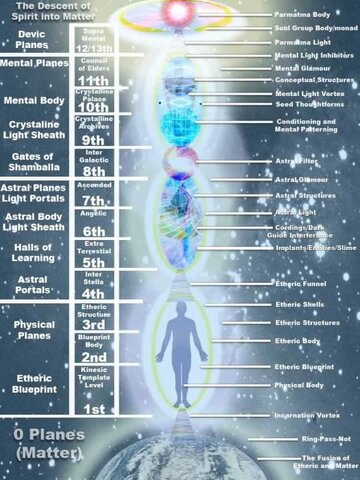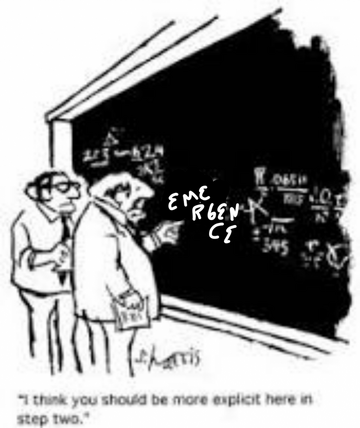These are very valid criticisms. I do have plans to write my model/approach up as an essay. In the essay, I will strive to thoroughly define terms and be consistent with terms.
It could be, Constance, that you and I are so far apart on how we conceptualize the phenomenon of consciousness that you will never be able to understand the approach I am articulating. As I've always argued, please be clear about times when you don't understand what I'm saying and times when you simply disagree. Having said that, I know that difference isn't always clear.
First of all, when it comes to consciousness, the thing that I am trying to understand is what is commonly referred to as phenomenal consciousness. However, I avoid this term because I think all consciousness is phenomenal. What is phenomenal consciousness?
If we take pain, green, sweet, sour, anger. What do they all have in common? The fact that they "feel" like something. They also all have structure. But structure is a phenomenon that can be accounted for in physical terms. Structure in itself is not a mystery. What can't be accounted for in physical terms is this feeling itself. Not any particular feeling per se, but the phenomenon of feeling itself. This is essentially the Hard Problem.
I will try to use the phrase "consciousness (feeling)." But we have to be clear that I do not have in mind any
particular feeling, but only
feeling itself.
So my approach to consciousness is
related to the Hard Problem. How does consciousness [ie, phenomenal consciousness, feeling, phenomenality, etc.] arise and/or emerge from physical processes? The Mind-Body problem (as I understand) asked a similar but less presumptuous question. It asks: How are the body and mind related? Unlike the HP, it doesn't assume that the mind (consciousness (feeling)) arises and/or emerges from the physical body.
In various posts and comments you have made, I sometimes get the sense that you seek to explain the origin of consciousness in personal terms. A crucial assumption I am making is that consciousness arises/emerges at the sub-personal level. Whether that be from a sub-personal physical process or a sub-personal process that is sub-physical. (And indeed, I am arguing that consciousness arises at a sub-physical level.)
Another thing I am doing is distinguishing consciousness (feeling) and mind. Like "pain, green, sweet, sour, and anger" the mind consists of consciousness (feeling) and structure. I use the term consciousness (feeling) to pick out "feeling" and I use the term mind to pick out structured consciousness (feeling).
Now to your questions: I am not equating "feeling" with life and mind.
I am arguing that consciousness (feeling) is a substrate from within which life and mind arise.
You ask how this consciousness (feeling) substrate could be heterogeneous and homogeneous. I'll use the example of a pond.
A pond is a substrate within which a whirlpool can form. We can imagine the pond being perfectly calm and smooth. In this case, the pond in is a homogeneous state.
However, at the same time, we know that a pond consists of water molecules. And each water molecule consist of H2O. Which is heterogeneous.
So, haha, I can see how this may be hopelessly confusing! In any case, what I am suggesting is that consciousness (feeling) as substrate is similar by analogy.
Consciousness (feeling) as a substrate can theoretically be in a homogeneous state like the pond, but also like the pond, the sate of the pond can become heterogeneous, i.e., multiple whirlpools can arise within it.
At the same time, this consciousness (feeling) as substrate--analogously to the pond--is itself made up of a more primitive substrate. In the case of water, that substrate is water molecules, in the case of consciousness (feeling), I think it is beyond our ken to know as this process/substrate will be sub-physical and sub-personal.
How can I even suggest that consciousness (feeling) can be a substrate?
It stems from my conception of perception, which again you and I may simply disagree on. I'll share two sections from a paper which pretty thoroughly encapsulates my approach to perception:
I will underline key statements of the text and highlight in red statements which address concerns you've voiced in the past with brain-based models of perception.
The Machine behind the Stage: A Neurobiological Approach toward Theoretical Issues of Sensory Perception
"When a neuroscientist considers perception or any other mental process, the starting point is the existence of a biological ‘machine’ (
Ryle, 1949), the brain, the activation of which generates all mental states and events that appear to us as if taking place on the stage of a ‘Cartesian Theater’ in the mind (
Dennett, 1991). There are two main consequences arising from this thesis.
The first one is the fact that the only direct cause of any mental state/event is a given pattern of brain activation: perception is created by a perceptual system, and behind each and every percept there is a certain neuronal activation, fully responsible for causing this percept. What produces the neuronal activation is a separate question: it can be physical objects sending light to the eye, artificial brain stimulation by an electrode, an epileptic seizure, magic mushrooms, auto-activation while dreaming, and many more. All these alternative brain-stimulation events can theoretically have an identical result: a specific brain-activation pattern, leading to the formation of a specific percept. The Causal Theory of Perception (see
Grice, 1961;
Lewis, 1980;
Snowdon, 1981) is a philosophical standpoint in harmony with this view, although too much energy is wasted in trying to accurately define what veridical perception is and how it differs from illusions and hallucinations. Trying to semantically categorize different perceptual experiences into different groups can indeed be an interesting, challenging game. Regarding the nature of perception, however, it does not offer much more insight on top of the fact that specific, individual perceptual experiences are caused by specific, individual brain activation patterns. To deny that the latter is neither identical with nor constitutive of the experience itself (
Child, 1994, pp. 161–162) is a step back toward dualism.
The second consequence of a brain-centered theory of perception is that, since the percept is the creation of a given neuronal system, its characteristics will depend on and directly reflect the properties of this system. This does not imply that perception is of an esoteric nature and in complete isolation from the physical world. Such isolation would miss the point, since perceptual systems have evolved in order to enable organisms to interact with their environment. In the example of vision, light falling on objects activates the brain by the process of phototransduction, during which photoreceptors at the retina transform electromagnetic energy into electrochemical activation, which in turn sends a neural signal to the rest of the visual brain. This light has specific characteristics which are determined by the properties of the reflecting object (i.e., carries information), and so determines the characteristics of the elicited brain activation. Thus, the characteristics of a percept are dictated by both the perceptual system which creates it and the properties of the physical object we are looking at. In this way we can acquire objective knowledge about the world, albeit in a very subjective manner. Perception is therefore characterized by an objective subjectivity or, to say it perhaps better, a subjective objectivity. Objectivity, since the transformation from the physical to the perceptual world follows certain constant, reliable rules. Subjectivity, since each percept is created by a perceptual system and therefore its characteristics depend on the properties of the latter: the same chair looks different to a human, a cat or a bat, and perhaps looks different even between two humans. Plato has realized that what we perceive are ‘reflexions of reality’ (Plato: The Republic, Book VII). The nature of these reflections depends on the nature of the perceptual system that both creates and perceives them."
In essence, I believe that perception is a simulation of the world by a perceptual system that has evolved/arisen within the world.
Earlier, I had mentioned that "structure" was something that can be accounted for in physical terms. I know this controversial ( as of course everything I'm saying is). [And it appears that "phenomenology" might be a better term than "structure."] But below is an example of what I mean:
"A good example in order to understand how percepts are
psychological entities created by the brain rather than
physical entities existing in the physical world is color. The science of color supports the view that phenomenal character is a property of the experience (
Byrne, 2002, p. 9) rather than not (
Tye, 2000), and its phenomenology can be nicely connected with known facts about the anatomy and physiology of the visual system.
Metamers, for example, are stimuli with a different light composition that look exactly the same color, nicely demonstrating that color vision does not necessarily inform us about the precise properties of objects in the real world4. Instead, the phenomenon is explained by the neurophysiological fact that there are three different cone types with different sensitivities across the visible spectrum. The Trichromatic Theory of Color Vision (see Blake and Sekuler, 2006, p. 246) can also explain the fact that any triplet of primary5 colors can give rise to the full gamut of the colors we perceive. Furthermore, the fact that a color cannot be red and green (or blue and yellow) at the same time, together with the fact that we need four (rather than three) names in order to roughly describe all the colors that we perceive, is a direct consequence of the way the cone input combines upstream from the retina to create opponent color-pairs (see Blake and Sekuler, 2006, p. 258). Finally, the fact that neuronal circuits in the brain compare lights coming from different part of the visual field is responsible for the well-known phenomena of color constancy and color induction6 (Land, 1977). Color vision thus nicely demonstrates that the characteristics of the visual experience are determined by the way in which the perceptual system is constructed. To say it with a philosopher’s words, ‘colors are a feature of the way we process visual information rather than a feature of the objective, mind-independent world’ (Fish, 2010, p. 145)."
So what all this is saying is that perceptions are directly correlated with states of the brain/organism, and only indirectly correlated with states of the external world via evolution. Because organisms and their perceptual systems have evolved to enable the organism to interact with the world.
We may just simply disagree on all the above. And if that's the case, you will certainly reject what I am going to say next.
The one thing that a brain-based model of perception cannot answer is how consciousness (feeling) exists. So it can provide an explanation of the phenomenology (structure) of colors. What it can't explain is why color (i.e., the phenomenal, feeling aspect) exists! In other words, a brain-based model of perception can in principle explain the full phenomenology of the mind, but it can't explain the origin of the substrate of the mind, consciousness (feeling) itself.
Another way of thinking about this is to say that certain qualities will always be left out of a simulation, due to the fact that there will always be a dissociation between the simulated and the simulation.
In this case, the quality that cannot be captured is consciousness (feeling) itself. The perceptual simulation cannot fully capture consciousness (feeling) because it is the very substrate within which arises.
How does this consciousness (feeling) substrate appear within the simulation that is human perception? I am arguing that it appears as matter. It appears to have extension in space, mass, spin, and all the other properties that we ascribe to matter.
I'm saying that matter and consciousness (feeling) are ontologically identical, but that consciousness (feeling) is presented/simulated in perception as matter.
This is how mind and matter are related. This is how the 1st person perspective and the 3rd person perspective are related.
There much much more to be said here and haggled over. One thing is the fact that our mind sometimes seems to go away, during sleep, anesthesia, coma, etc. How can this be if consciousness (feeling) is a substrate? It has to do with the mind and consciousness (feeling) being distinct. Just as a pond and a whirlpool are distinct, so too are consciousness (feeling) and minds.




